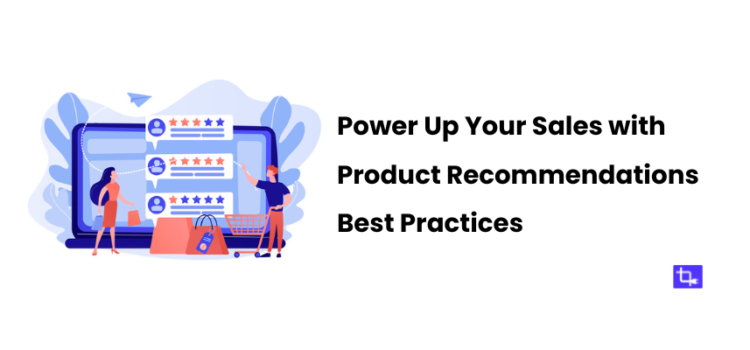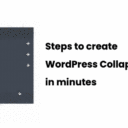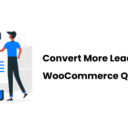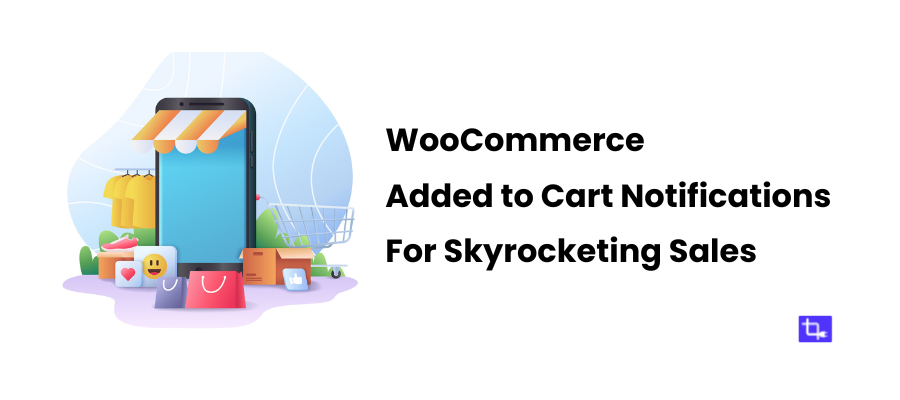Power Up Your Sales with 7 Product Recommendations Best Practices

Want to unlock the secret to skyrocketing your sales? Curious about how top e-commerce sites boost revenue with smart product suggestions? Implementing product recommendation best practices is the solution.
You can enhance your customer experience and also drive significant growth for your business by understanding and applying these best practices. Let’s dive into how you can use recommendations to maximize your sales and keep customers coming back for more.
Did you know that personalized product recommendations can drive up to 30% of your sales? It’s true! Using product recommendation best practices can significantly improve your business.
Product recommendation best practices are more than just a nice-to-have feature. They’re essential for any online business who wants to boost sales. With product recommendations customers are likely to buy more.
One of the biggest challenges businesses face is implementing product recommendations in a way that feels natural and effective. Too often, I see businesses either overwhelming customers with too many options. Also, some even offer irrelevant suggestions that don’t resonate.
These mistakes can frustrate customers and even drive them away. This is the opposite of what you want!
In this post, I’m going to walk you through everything you need to know about product recommendation best practices. By the end of this post, you’ll have a solid strategy to power up your sales using smart and data-driven product recommendations.

Understanding Product Recommendations
What are product recommendations?
Product recommendations are suggestions offered to customers. The suggestions are typically based on their browsing history, past purchases, or even what similar customers have bought.
These recommendations can take various forms. Such as upselling – where you suggest a higher-end version of a product they’re considering. Cross-selling – where you offer complementary products that pair well with what’s already in their cart.
Personalized recommendations are another key type. In this type the suggestions are created specifically to the individual’s tastes and preferences.
Why Product Recommendations Works So Well
It’s all about psychology. When I shop online, I appreciate when a site seems to “get me”—like it knows what I’m looking for even before I do.
This is where the personalized recommendations come in. They tap into the customer’s desire for convenience and relevance. This makes the shopping experience smoother and more enjoyable.
This not only increases the chances of a purchase but also boosts customer loyalty. Because they’re more likely to return to a site that offers relevant and timely suggestions.
Key Benefits of Production recommendations
The benefits of using product recommendation best practices are huge. First, there’s the obvious increase in average order value. Customers are more likely to add extra items to their cart if they’re recommended strategically.
Then, there’s the improved customer experience. You’re not just selling more using product recommendations but you’re also helping customers find what they need more easily.
And finally, these product recommendations best practices can lead to higher conversion rates. This means more visitors to your site are likely to make a purchase.
The Foundation of Effective Product Recommendation Best Practices
Understanding audience
Understanding your audience is the foundation of any effective product recommendation strategy. You need to dive deep into customer behavior, preferences, and purchasing history.
For instance, what products are they browsing? What have they bought before? What do similar customers tend to purchase?
The more you know about your customers the better you can create recommendations that truly resonate.
Data is Key
Data is the secret sauce that powers product recommendation best practices. Without it you’re just guessing and that’s not a strategy.
You can make the recommendations relevant by analyzing customer data, such as browsing patterns and past purchases. The more accurate your data, the better your recommendations will be.
Segmentation
Segmentation is males recommendations that hit the mark. You can offer more relevant suggestions by grouping your audience into segments based on behavior, preferences, or demographics.
For example, you can create upselling strategies to showcase premium options if you know a segment of your audience prefers high-end products.
Segmentation helps ensure that your recommendations aren’t just generic. It’s also useful to make alignment with what different customer groups are looking for.
1. Best Practices for Personalizing Product Recommendations
Dynamic Recommendations
Static recommendations are a thing of the past. Dynamic and real-time recommendations can adapt to what the customer is doing right now.
For instance, if a customer is browsing winter jackets, your site should immediately start suggesting related items like scarves, gloves, or even matching boots.
The goal is to be relevant and timely. You need to offer suggestions that make sense in the context of what the customer is currently interested in.
This level of responsiveness can make a big difference in whether a customer decides to buy or not.
A/B Testing
A/B testing is a powerful tool in refining your product recommendation strategy. You should A|B test different recommendations, placements, and messaging. This will help you to see what’s more suitable for your audience.
One version of a product recommendation might get more clicks. On the other hand, another one might lead to more conversions. The insights you gain from A/B testing allow you to continuously optimize your strategy.
Avoid Overwhelm
Avoid overwhelming your customers with too many options. It’s tempting to showcase everything but too many choices can lead to decision paralysis.
Focus on recommending just a few highly relevant products that complement what the customer is already interested in. This will help them make the decisions easily.
2. Cross-Selling and Upselling: Maximizing Revenue with Smart Recommendations
Cross Selling Using Product Recommendations
Cross-selling is one of the most effective ways to boost your sales through product recommendations. You can suggest complementary products that go well with what the customer is already purchasing.
For example, if someone is buying a laptop, you might recommend a laptop bag, a mouse, or even a software package.
The key is to make these suggestions feel natural and helpful, rather than pushy or salesy. This way cross-selling can significantly increase the average order value.
Here are some of the best practices for cross-selling:
- To get the most out of cross-selling it’s important to be strategic.
- Timing is everything. Recommend complementary products at the right moment. You can recommend products on the product page, in the cart, or during checkout.
- Make sure the products you’re suggesting are genuinely relevant and add value to the customer’s original purchase.
- Offer bundles or discounts when products are bought together.
Upselling Using Product Recommendations
Upselling is all about encouraging customers to buy a higher-end version of the product they’re interested in.
For example, if someone is looking at a basic smartphone, you might suggest a more premium model with better features.
The idea is to highlight the added value of the more expensive option. It can be a product with better performance, more features, or a longer warranty.
Upselling works best when the higher-end product genuinely meets the customer’s needs better than the lower-end option.
Here are some of the best practices for upselling:
- It’s important to focus on the customer’s needs and how the more expensive product can better meet them.
- Highlight the key differences and benefits, and don’t forget to consider price sensitivity.
- Offering a small discount or bundle with the upsell can make the higher price less burden.
- Be sure to present the upsell at the right time. You can show during product selection or in the cart. This is where the customer is already in a buying mindset.

3. Trending Products
Another effective strategy is to highlight trending products in your recommendations. Customers love to know what’s popular. They don’t want to miss out on the latest and greatest.
You tap into the psychology of FOMO (Fear of Missing Out) by showcasing items that are currently trending. This can be a powerful motivator.
You can recommend a best-seller, a new arrival, or a product that’s gaining a lot of attention on social media. Making it part of your recommendations can increase the purchase rate.
It’s important to keep your trending product recommendations fresh and up-to-date to make this strategy work. Use real-time data to identify what’s currently hot and be sure to display these products on your site.
This not only encourages sales but also helps build a sense of community and shared experience among your customers. Because they see that others are buying and enjoying the same products.
4. User-Generated Content
User-generated content (UGC) is another powerful product recommendation best practice. This form of social proof that can enhance your product recommendations.
It adds a layer of authenticity when customers see real people just like them using and enjoying your products. This is a trust factor that traditional marketing can’t replicate.
That’s why you should use customer photos, testimonials, or even unboxing videos into your product recommendations to make them more relatable. Also, don’t forget to share those on other places of your website and social media.
For example, if you’re recommending a particular pair of shoes you can include a photo of a happy customer wearing them. You can also use a snippet of a positive review that can convince someone to add them to their cart.
UGC not only makes your recommendations more compelling but also builds a stronger connection between your brand and your customers.
5. Optimizing Product Recommendations for Mobile Devices
Mobile-First Design
Mobile-first design is a crucial part of product recommendation best practices. Because more and more shoppers are browsing and purchasing directly from their smartphones.
You need to ensure that your recommendations are optimized for mobile devices. A mobile-first design means that your recommendations should be easy to navigate on smaller screens.
It should have a touch-friendly interface and load fast. Customers are far more likely to engage with your recommendations this way. Which will lead to higher conversion rates.
Here are the best Practices for mobile recommendations:
- Keep your recommendation text concise. Mobile screens have limited space, so clarity and brevity are key.
- Use clear and high-quality images that load quickly. Slow load times can frustrate users and cause them to abandon their carts.
- Ensure that your recommendation widgets or banners are responsive. They should automatically adjust to fit different screen sizes without compromising usability.
In-App Recommendations
Using in-app product recommendations can enhance user engagement if you have a mobile app. In-app recommendations allow you to deliver personalized suggestions based on real-time behavior. Such as the products a user has viewed, added to their cart, or even purchased in the past.
You can add these recommendations in various places. For example, the homepage, product pages, or during checkout. Integrating in-app recommendations helps your customers to explore more products and ultimately boost sales.

6. Measuring the Success of Your Product Recommendations
You need to track key performance metrics to truly understand the effectiveness of your product recommendations. Some of the most important ones include click-through rates (CTR), conversion rates, and average order value (AOV).
CTR helps you measure how often customers are engaging with your recommendations. Conversion rates show how many of those clicks actually lead to a purchase. AOV is particularly important as it indicates how much customers are spending on average per order.
These can help you gauge the overall impact of your recommendations on sales. Monitoring these metrics regularly allows you to see what’s working and where there’s room for improvement.
Beyond metrics, customer feedback can help you fine-tune your product recommendations. Encourage customers to leave reviews or complete surveys after their purchase.
As if they find them helpful or are too pushy. Gathering this feedback and analyzing it can reveal patterns and trends that numbers alone might not show. This qualitative data can guide you in making adjustments to your recommendations..
One of the best practices in product recommendation is to treat it as an ongoing process rather than a one-time setup. Continuous improvement is key to keeping your recommendations relevant and effective.
Regularly conducting A/B tests can help you identify which recommendations are most effective and refine them over time. Also, you should be up-to-date with the latest trends.
7. Common Pitfalls to Avoid in Product Recommendations
Over Personalization
Over personalization can lead to customer fatigue. Users feel overwhelmed or even creeped out by how accurately you’re predicting their needs.
It’s important to strike a balance. You should personalize recommendations based on relevant data.
For example, if a customer has purchased a baby stroller, recommending baby accessories makes sense. But bombarding them with every baby-related product might be overkill.
The key is to provide value without crossing the line. Don’t be overly aggressive or invasive.
Ignoring Data
One of the biggest mistakes businesses make with product recommendations is neglecting the data-driven insights at their disposal. It’s easy to fall into the trap of assuming you know what customers want.
Your recommendations might miss the mark without data to back it up. Collect and analyze customer data including browsing history, past purchases, and demographic information.
These are essential to determine what products to recommend. Ignoring this data reduces the effectiveness of your recommendations. Also, can lead to missed opportunities for upselling and cross-selling.
One-Size-Fits-All
A one-size-fits-all approach to product recommendations often fails to engage customers. Generic recommendations that don’t take into account the unique preferences and behaviours of individual users can feel irrelevant.
Focus on segmenting your audience if you want to avoid this pitfall. Also, show separate recommendations to different customer segments.
This can be as simple as offering different product suggestions for first-time visitors versus returning customers.
Choosing the Right Product Recommendation Tools
Having the right product recommendations tools is essential. There are numerous options available. You can choose from simple plugins to advanced AI-powered systems.
For WordPress users, there are several product recommendation plugins that can help you get started quickly and easily. You can go for WooCommerce Product Recommendations or the YITH WooCommerce Frequently Bought Together.
These plugins allow you to create personalized recommendations based on customer behavior and preferences. Looking for something more advanced? AI-powered solutions like Dynamic Yield or Nosto offer more advanced capabilities. They also offer real-time recommendations and A/B testing.
Conclusion
I have covered a lot of ground in this post. The key takeaway is that product recommendation best practices are really important for driving sales and enhancing the customer experience.
Focus on relevance, personalization, and continuous improvement to boost your bottom line and stronger relationships with your customers.
Don’t wait to start implementing these best practices on your site. The sooner you start, the sooner you’ll see the benefits.
Take the time to analyze your customer data, choose the right tools, and continuously refine your recommendations. Embrace these product recommendation best practices and watch your business thrive!





